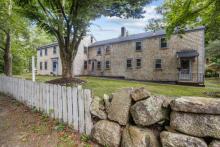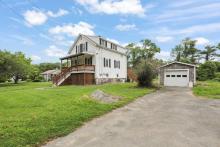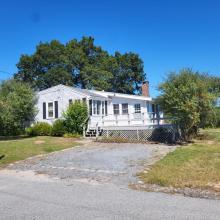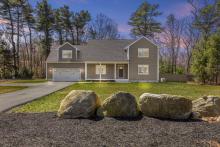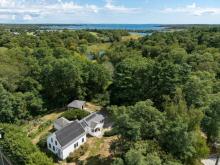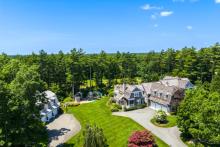Residents remain concerned with proposed Marion historic district
MARION — Following a contentious meeting in January, the Marion Historic District Study Committee sought to make changes to a proposed bylaw that would potentially create a historic district in Marion. However, residents continued to voice their apprehension with the proposed bylaw at a public meeting Tuesday, Feb. 18.
Several residents who live or operate businesses within the boundaries of the proposed district attending the meeting questioned different aspects of the bylaw such as the voting process to approve the bylaw, how it would affect commercial properties, the effect it would have on property taxes and the time it would take to get approval for construction and additions if passed.
The bylaw is meant to preserve the character of Marion by creating a historic district that includes all of Cottage Street, Hiller Street, Main Street, Pie Alley, School Street, South Street, Water Street, #1-9 Allen Street, #137-183 Front Street, #1-2 Island Wharf Road, #2-10 Lewis Street, #61-78 Pleasant Street and #8-16 Spring Street.
Under the proposed bylaw, certain properties in the proposed district would abide by specific guidelines for exterior construction, additions, new construction and demolition in order to maintain a sense of harmony with the original historic structures.
The committee made several changes to the bylaw since receiving public feedback at their meeting in January, most notably increasing representation of district residents in the committee from two members to three members and adding further in-depth language regarding the specific limitations of exterior construction and additions.
Exterior construction and additions are asked to be “sympathetic to the surroundings,” with sections in the bylaw identifying specific aspects that may impact the historical cohesion of the property such as siting, scale, design and new construction.
Historical preservation consultant Eric Dray emphasized that additions to historic buildings must have a sense of consideration for appropriate siting, scale, design and materials in order to maintain a harmonious-looking district.
Dray describes Marion as one of the “most intact historic villages on the South Coast” with the aim of the bylaw being to “preserve and protect the distinctive architectural and historic significance” of the village.
In addition to these bylaw changes, the committee also released an additional survey to residents of the proposed historic district to better gauge public opinion of the bylaw with results to be posted in March.
Residents who live or operate businesses within the potential historic district were troubled by the proposal and the possible restrictions they felt impeded on their personal freedoms, while other residents voiced their support for the historical preservation of Marion.
Several citizens critiqued the voting process for the bylaw, expressing their frustration with the fact that Marion residents outside of the proposed district will have a say in the decision.
Committee members explained that in order for a bylaw to pass, the entire town must have the opportunity to vote on it.
Chair of the Marion Historic District Study Committee Will Tifft also emphasized that despite some not living in the proposed district, all Marion citizens would benefit from the potential passing of the bylaw.
“It does matter to everybody in Marion whether there’s a historic district,” said Tifft.
Tifft stressed that the historic character of Marion makes it distinct to people potentially looking to move to the area.
“One of the reasons that people move to Marion, outside of what we’re proposing here with the historic district, is because of the character of the village. They want to be in this town,” said Tifft.
Residents also raised concerns about the bylaw causing increased time spent waiting for permit approval and further obstruction to building processes.
Tifft guaranteed that the bylaw is “designed as much as possible to not make this complex” and that the commission offers a “shorter timeline than any other permitting process” in Marion.
Business owners in the proposed district questioned how the bylaw will impact the use of their commercial property, with Tifft replying that the bylaw is only concerned with exterior construction, not use of the property, and that maritime and industrial properties are entirely exempt from review from the committee.
Other residents worried that the implementation of the historic district would increase property taxes to the point of potentially ousting residents whose families lived in Marion for generations. Dray assured the attendees that oftentimes “property values are stabilized” in historic districts.
Committee member George Morton emphasized that the creation of a historic district would potentially benefit the village as a whole and strengthen the local government as well.
“All of us are working collectively for you,” said committee member George Morton. “If we do our jobs right, I think we’ll find ways to be able to work together and make a historic district that has real value and a better town government.”
Tifft urged residents to reach out to the committee with any questions or comments before the next Historic District Study Committee on Tuesday, March 11.



.jpg)


